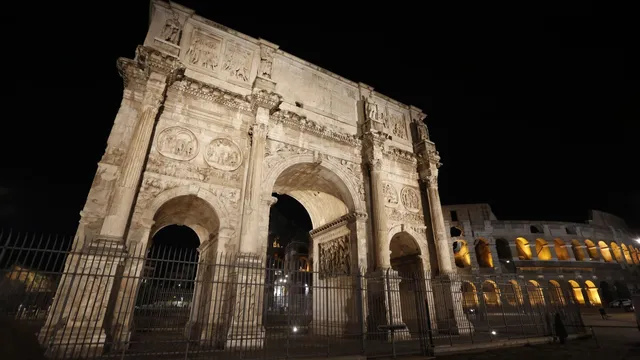
lightning strikes ancient Constantine Arch in Rome during storm
2024-09-04 11:46- Lightning struck the Constantine Arch in Rome during a violent thunderstorm, causing fragments to loosen.
- Workers at the Colosseum Archeological Park quickly gathered and secured the fallen pieces.
- The incident highlights the importance of preserving ancient structures amid natural events.
Express your sentiment!
Insights
On Tuesday, during a violent thunderstorm in Rome, lightning struck the ancient Constantine Arch located near the Colosseum. This incident caused fragments of the structure to loosen, prompting immediate action from workers at the Colosseum Archeological Park. They quickly gathered and secured the fallen pieces to prevent further damage. The park officials reported that the recovery efforts were timely and efficient, ensuring that all fragments were accounted for. The Constantine Arch, which stands over 20 meters tall, was erected in 315 A.D. to commemorate Emperor Constantine's victory over Maxentius at the Milvian Bridge. This historical monument is not only significant for its architectural grandeur but also for its cultural and historical importance in Roman history. The storm that led to the lightning strike also caused additional disruptions in the city, including fallen trees and flooded streets, highlighting the severity of the weather conditions at the time. The evaluation of the damage to the arch is ongoing, as officials assess the impact of the lightning strike on this ancient structure. Preserving such historical landmarks is crucial, and the swift response by the park's workers demonstrates a commitment to maintaining the integrity of Rome's rich heritage. The incident serves as a reminder of the vulnerability of ancient structures to natural phenomena, necessitating ongoing vigilance and preservation efforts.
Contexts
During a recent storm in Rome, the ancient Constantine Arch was struck by lightning, emphasizing the city's vulnerability to extreme weather events. This incident serves as a reminder of the unpredictable nature of storms, which can lead to significant damage to historical structures. In a broader context, Rome is facing various social challenges, including incidents of vandalism against public art. A mural honoring black Olympian Paola Egonu was recently defaced, highlighting ongoing struggles with inclusivity and respect for diversity within the community. Additionally, the city has seen violence against those opposing organized crime, as evidenced by the attack on Don Antonio Coluccia, an antimafia priest, during an anti-crime march. This reflects the dangers faced by individuals advocating for social change in Italy. The juxtaposition of natural disturbances, like the lightning strike, and social issues, such as vandalism and violence against activists, illustrates the complex landscape of Rome, where historical beauty coexists with contemporary challenges.